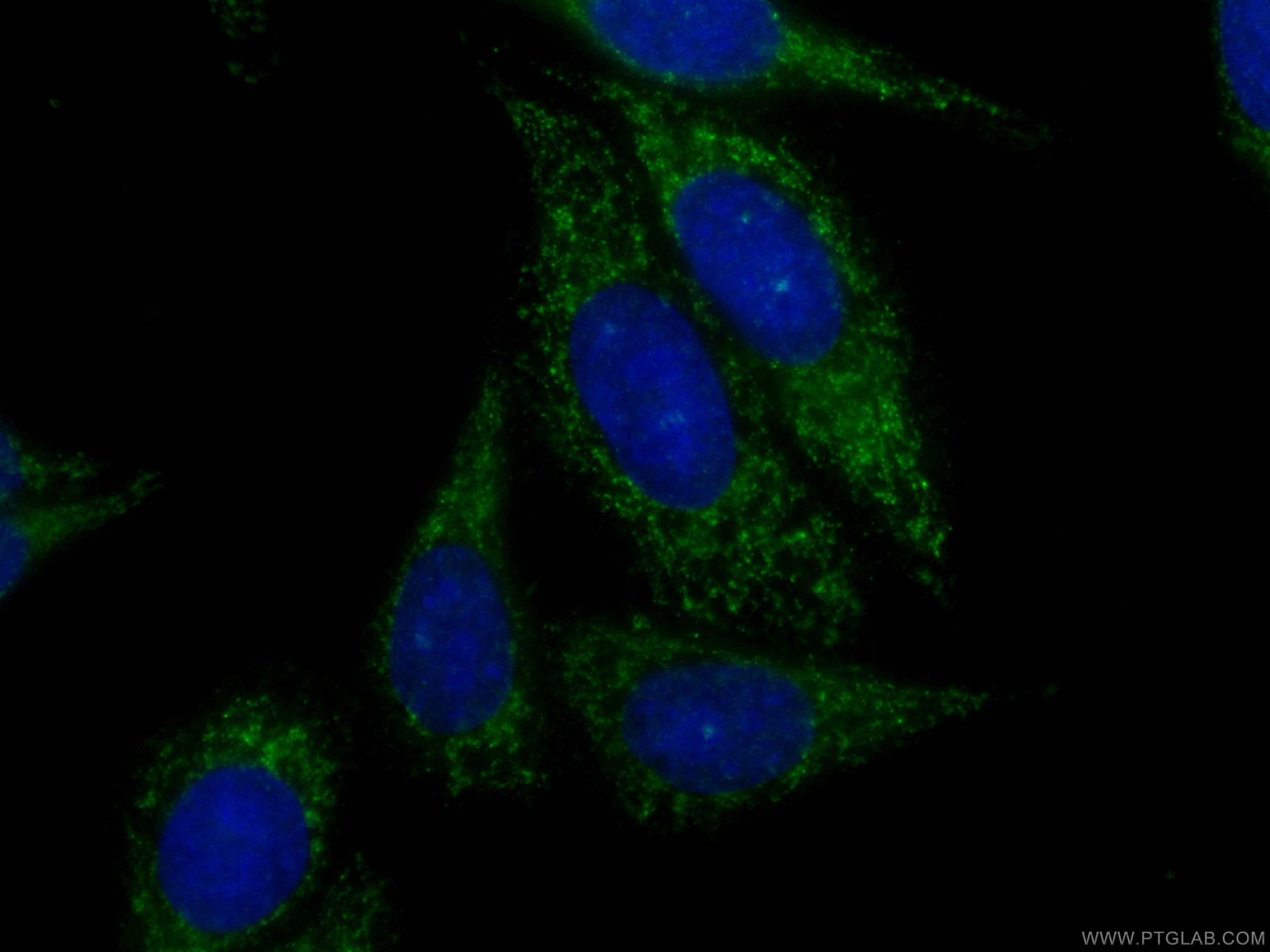Tested Applications
| Positive IF/ICC detected in | HepG2 cells |
Recommended dilution
| Application | Dilution |
|---|---|
| Immunofluorescence (IF)/ICC | IF/ICC : 1:50-1:500 |
| It is recommended that this reagent should be titrated in each testing system to obtain optimal results. | |
| Sample-dependent, Check data in validation data gallery. | |
Product Information
CL488-60300 targets PTEN in IF/ICC applications and shows reactivity with human, mouse samples.
| Tested Reactivity | human, mouse |
| Host / Isotype | Mouse / IgG2a |
| Class | Monoclonal |
| Type | Antibody |
| Immunogen |
CatNo: Ag17274 Product name: Recombinant human PTEN protein Source: e coli.-derived, PGEX-4T Tag: GST Domain: 204-403 aa of BC005821 Sequence: PMFSGGTCNPQFVVCQLKVKIYSSNSGPTRREDKFMYFEFPQPLPVCGDIKVEFFHKQNKMLKKDKMFHFWVNTFFIPGPEETSEKVENGSLCDQEIDSICSIERADNDKEYLVLTLTKNDLDKANKDKANRYFSPNFKVKLYFTKTVEEPSNPEASSSTSVTPDVSDNEPDHYRYSDTTDSDPENEPFDEDQHTQITK Predict reactive species |
| Full Name | phosphatase and tensin homolog |
| Calculated Molecular Weight | 47 kDa |
| Observed Molecular Weight | 55 kDa |
| GenBank Accession Number | BC005821 |
| Gene Symbol | PTEN |
| Gene ID (NCBI) | 5728 |
| RRID | AB_2883138 |
| Conjugate | CoraLite® Plus 488 Fluorescent Dye |
| Excitation/Emission Maxima Wavelengths | 493 nm / 522 nm |
| Form | Liquid |
| Purification Method | Protein A purification |
| UNIPROT ID | P60484 |
| Storage Buffer | PBS with 50% glycerol, 0.05% Proclin300, 0.5% BSA, pH 7.3. |
| Storage Conditions | Store at -20°C. Avoid exposure to light. Stable for one year after shipment. Aliquoting is unnecessary for -20oC storage. |
Background Information
PTEN (also designated MMAC1), products of tumor suppressor genes, are found deleted in most human gliomas. The PTEN genes are also mutated in many other tumors, such as brain, breast, kidney and prostate cancers. PTEN is a protein tyrosine phosphatase that may terminate the signaling transduction pathways mediated by PI 3-kinase/Akt. PTEN has an apparent molecular weight of 55 kDa.




